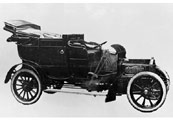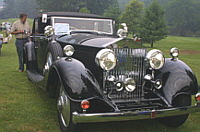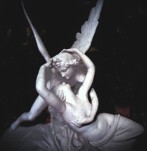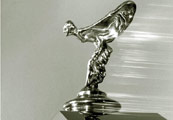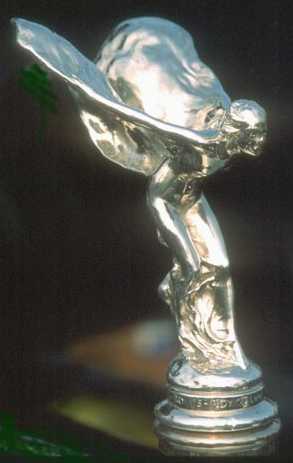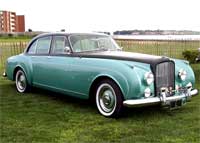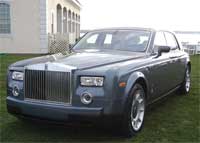|
ROLLS ROYCE - FLYING LADY
|
||||||||
|
Rolls-Royce Motor Cars made its debut at the 1904 Paris Motor Show, displaying two-, three- and four-cylinder cars, delivering 10hp, 15hp and 20hp respectively. An advert was placed in The Autocar magazine for "the first simple, silent Rolls-Royce", and with the launch of the six-cylinder engine, 30hp model (6177cc, 55mph) success was immediate. Rolls began to race a "Twenty" four-cylinder car - with its 4118cc 20hp engine delivering up to 52mph - and won the 1906 Isle of Man Tourist Trophy in a "Light Twenty" shorter-wheelbase model.
Rolls Royce 15 hp.
Royce understood the importance of motorsport in promoting the brand, and also the role of publicity stunts; he and Claude Johnson, now Managing Director of Rolls-Royce Ltd., came up with ideas including a drive from Monte Carlo to London (which took 37 hours, 30 minutes). Although a new V8-engined model known as the Legalimit failed to take off, the six-cylinder, 7036cc 40/50 (48bhp) was instantly popular, liked for its smoothness, refinement, flexibility and reliability.
It was the
Silver Ghost that in 1907 caused the motoring press to
name Rolls-Royce the best car in the world. The
characteristics of the Silver Ghost were silence,
smoothness and power. Only 7876 cars were
built over a period of 19 years - by comparison Henry
Ford in a similar period made over 15 million
Model 'T' s.
Rolls Royce Phantom III - 1936
The Silver Ghost, now with a 7428cc engine, then saw off a challenge from Napier in 1911, averaging 24.3mpg on a run between London and Edinburgh and a top speed of 78.2mph at Brooklands - the Napier managed 19.3mpg and 76.4mph. A Ghost fitted with a single-seater body managed 101.8mph at Brooklands later in the year, and specially-prepared cars took part in the Alpine Trials and then the Spanish Grand Prix of 1913, when the Marquis de Salamanca won the event (thanks to Rolls-Royce test driver Eric Platford, leading the race, pulling over to let the important client take the glory). Sales were strong, and Royce built a new factory in Derby to cope with the growing demand for his cars. A Rolls-Royce service and repair centre was opened in Cricklewood, London, and driving schools were opened to instruct owners and chauffeurs on the best techniques.
The famous mascot was created in 1911 when artist Charles Sykes was commissioned to illustrate the year's sales catalogue. Sykes drew a girl with arms outstretched, holding her flowing gown, and the figurine became known as 'The Spirit of Ecstasy', although she was originally called 'The Spirit of Speed' and also known as 'The Flying Lady' or 'The Silver Lady'.
The Spirit of Ecstasy is one of the most well known motor car mascot in the world. Designed by Charles Robinson Sykes, The Spirit of Ecstasy has adorned the radiators of Rolls-Royce motor cars since 1911. This wonderful mascot was modeled after a young woman who had bewitching beauty, intellect and esprit - but not the social status which might have permitted her to marry the man with whom she had fallen in love.
Inspiration
Lord Montagu had made the decision to put a mascot on top of the radiator, and it had become a fashion. Rolls-Royce had noted other owners of their cars following the new vogue, but doing so with questionable style by choosing mundane or even risqué and vulgar subjects.
Following Lord Montagu's commission, Charles Sykes was asked to create a mascot which in future would adorn every Rolls-Royce. In February 1911 he presented the "Spirit of Ecstasy", which was easily recognizable as being a variation on the theme of "The Whisper". The similarity was hardly coincidental because the model for both had been Miss Thornton.
The Spirit of Ecstasy
The Spirit of Ecstasy was delivered by the Company with
every Rolls-Royce. Each was done using the technique
which was thousands of years old and known as the
lost-wax method. This practice results in the mould's
being destroyed to reveal the casting, which explains
why no two figures are exactly alike. Sykes, assisted by
his daughter Jo, remained responsible for manufacturing
the Spirit of Ecstasy for many years. Likewise, each of
the unique creations bore his signature on the plinth.
The sculptures are either signed "Charles Sykes,
February 1911" or sometimes "Feb 6, 1911"
or "6.2.11". Even after Rolls-Royce took over
the casting of the figures in 1948 each Spirit of
Ecstasy continued to receive this inscription until
1951.
Over the years various alterations have been made. Those mascots for Rolls-Royce motor cars at the Springfield plant in the USA were modified. Bowing a little more forward no longer were they a danger to the bonnet. The original version had touched the bonnet sides when these were opened without the precaution having been taken of turning the figure sideways.
Rolls Royce - Flying Lady
The kneeling version remained after the Second World War for the new Silver Wraith and Silver Dawn. All following models, however, sported a standing mascot, although this has now been reduced in size considerably compared to the old one.
Silver Cloud - 1960
In 1920 Rolls-Royce had taken part in a competition in Paris for the most apposite mascot in the world. This they did with a gold-plated Spirit of Ecstasy, which secured Rolls-Royce first place. From then on gold-plated versions of the Spirit of Ecstasy were available from the company - at an extra charge.
Safety regulations in some countries turned out to be a stumbling block to the fitting of the Spirit of Ecstasy. She qualified as a sharp-edged piece of metal jutting from the coachwork, which might injure a victim in an accident. because of this, in Switzerland during the second half of the seventies, the installation of mascots on Rolls-Royces was forbidden and purchasers of a new Rolls-Royce delivered to that country found their mascot in the glove compartment. The problem was solved with the Silver Spirit and Silver Spur; at the merest knock the Spirit of Ecstasy sank into the radiator surround and vanished out of harms way. Thus were the safety regulations satisfied.
Seraph - 2004
LINKS:
RROC,
Rolls - Royce Owners' Club (USA)
EXOTIC TEAK WOOD - FIGUREHEAD LINK TO CUTTY SARK - FIGUREHEAD LINK TO HMS VICTORY - FIGUREHEAD
LINK TO HMS WARRIOR - FIGUREHEAD CLEOPATRA - QUEEN OF EGYPT KYLIE MINOGUE - QUEEN OF POP
The Solar Navigator - SWASSH (Small Waterplane Area Stabilized Single Hull) test model 2012 The latest Solarnavigator is a robot ship designed to be capable of an autonomous world navigation set for an attempt in 2015 if all goes according to schedule. The platform is also ideal for persistent monitoring 365 days year 24/7 - with data streamed back to your command HQ via satellite.
|
||||||||
|
This
website is copyright © 1991- 2013 Electrick Publications. All rights
reserved. The bird logo
|
